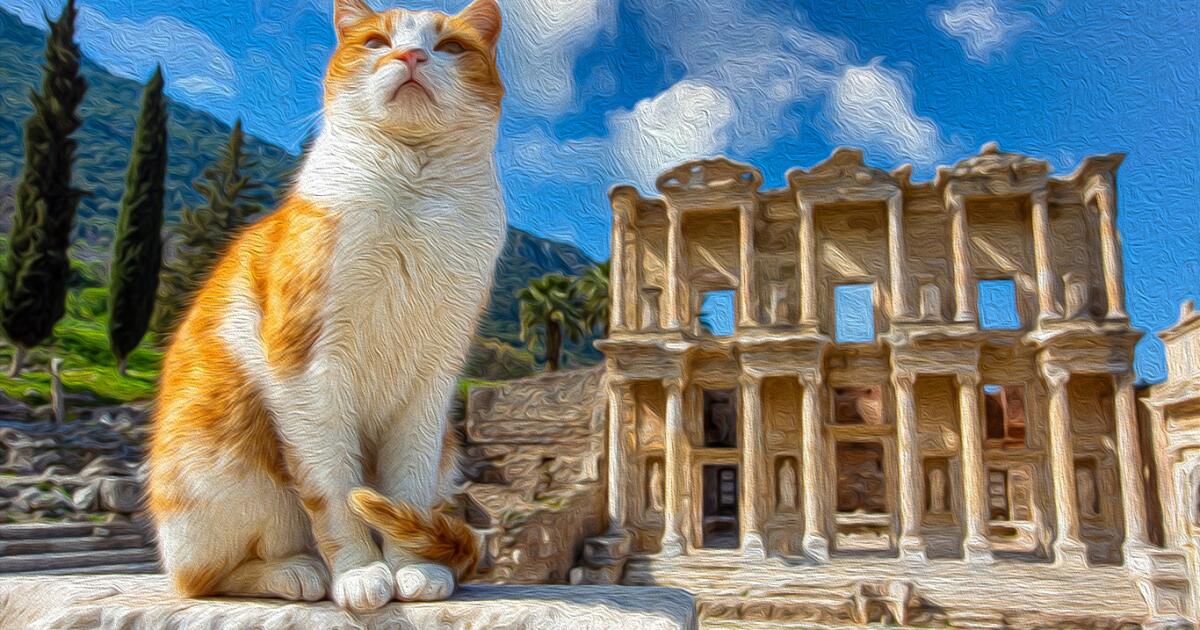
Cats. You can’t deny they have a certain mystique. Long before we were making memes about them on the internet, ancient civilizations were spinning myths about their powers. They’ve been worshiped, feared, demonized and adored. Sometimes all at once. Even today, those stories about cats being uncanny, otherworldly beings still stick around.
Ancient Egyptian Cat Myths: Worship and Bastet
Egyptians didn’t just love cats; they revered them. To them, a cat was an earthly representative of Bastet, the cat-headed goddess of protection and good health. Bastet was tied to both the sun’s warmth and the night’s mystery, which feels just about right for a cat. Harming one was a crime against the gods themselves. A capital offense. Families even mummified their beloved cats, burying them with food and jewelry for the afterlife.
Celtic Cat Folklore and Norse Legends
Now, head north and the folklore gets both mystical and a little chilling. In Celtic Scotland and Ireland, people believed cats could predict the weather. And, more darkly, that they could steal the soul of a recently deceased person if they walked over the body before burial.
The Scots also told stories of the Cat Sìth, a fairy creature that looked like a large black cat with a white spot on its chest. So farmers would leave out dishes of milk on Samhain night to keep it happy. In Norse mythology, the goddess Freyja rode a chariot pulled by two giant cats (which sounds both amazing and completely unmanageable).
Asian Cat Legends and Folklore
Across Asia, cats take on a whole new set of roles. In Japan, you’ll see the Maneki Neko, that little “beckoning cat” statue that waves from restaurants and shops, supposedly inviting prosperity.
But Japanese folklore also tells of the Bakeneko and Nekomata. Supernatural cats that could shapeshift, speak human languages and, in some stories, raise the dead.
In China, cats were believed to ward off evil spirits. Their watchful eyes were said to see what humans could not.
Black Cat Superstitions in Europe
By the Middle Ages, Europe’s relationship with cats had taken a sharp, dark turn. Once valued as mousers, cats, especially black ones, became tied to witchcraft and the devil. People believed they were witches’ familiars. Partners in dark magic. This led to mass persecution, and cats were killed in huge numbers during witch hunts. Ironically, this probably worsened the spread of the plague by getting rid of natural rodent control.
But sailors had a completely different take. On ships, a black cat wasn’t a bad omen. It was a sign of good fortune and protection.
Modern Cat Myths and Supernatural Stories
Those old superstitions even followed cats across the Atlantic. In rural America, stories spread of cats stealing the breath of sleeping infants, a myth likely inspired by cats simply being drawn to the warmth of a baby’s crib.
But not all myths are ancient. In the 2000s, a cat named Oscar became famous for his eerie ability to predict death. He lived in a Rhode Island nursing home and would climb into bed with a resident just hours before they passed away. He did this over a hundred times. Was it scent, body temperature or something else? Science had explanations, but the story took on a life of its own.
Why Cat Myths Endure Today
What’s fascinating is how these old tales ripple into the present. The spooky, manipulative cat trope we see in memes is just a modern twist on centuries of mythmaking. We inherited the witch’s familiar, the soul-stealer and the trickster and turned it into a grumpy housecat meme.
The result? People still sometimes misread normal cat behavior as vindictive or supernatural, when really, they are just sensitive, social animals reacting to their environment. From Bastet to Oscar, our stories about cats have always revealed as much about us as about them. Half myth, half companion. That’s the magic of cats.